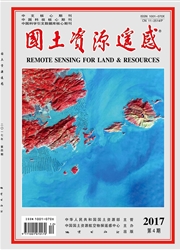

 中文摘要:
中文摘要:
早、有效的洪水警告为减少生活和经济损坏的损失是必要的。中国气象学的管理( CMA )的三个全球整体天气预言系统,中等范围的天气预报( ECMWF )的欧洲中心,并且 US 公民在 THORPEX (观察系统研究和可预测性实验)为环境预言( NCEP )集中交互宏大全球整体( TIGGE )档案在这研究被使用驱使全球/地区性的吸收和预言系统(葡萄)生产 6-h 铅时间预报。产量( 降水,空气温度,湿度,和压力)接着驾驶水文学模型 XXT (第一 X 代表 Xinanjiang ,第二 X 代表混血儿,并且 T 代表 TOPMODEL ),联合 TOPMODEL 的混合模型(地形学基于水文学模型)并且 Xinanjiang 模型,为一个洪水事件的案例研究,那在 Linyi 分水岭从2007年7月18日持续了。降雨从三张预报用 TIGGE 数据由葡萄预报的结果表演集中所有低估重降雨率;当那从 CMA 执行最糟时,由用从 NCEP 的数据的葡萄的降雨预报离观察最靠近。而且,整体不比对降雨预报的单个成员好。与相应降雨预报相对照,流量预报为所有三个预报中心是好一些的,特别为 NCEP。结果建议由 GRAPES/XXT 模型的那个早洪水警告基于 TIGGE 数据是可行的,这提供一条新途径提起有准备并且这样减少洪水的社会经济的影响。
 英文摘要:
英文摘要:
Early and effective flood warning is essential for reducing loss of life and economic damage. Three global ensemble weather prediction systems of the China Meteorological Administration (CMA), the European Centre for Medium-Range Weather Forecasts (ECMWF), and the US National Centers for Environmental Prediction (NCEP) in THORPEX (The Observing System Research and Predictability Experiment) In- teractive Grand Global Ensemble (TIGGE) archive are used in this research to drive the Global/Regional Assimilation and PrEdiction System (GRAPES) to produce 6-h lead time forecasts. The output (precipita- tion, air temperature, humidity, and pressure) in turn drives a hydrological model XXT (the first X stands for Xinanjiang, the second X stands for hybrid, and T stands for TOPMODEL), the hybrid model that combines the TOPMODEL (a topography based hydrological model) and the Xinanjiang model, for a case study of a flood event that lasted from 18 to 20 July 2007 in the Linyi watershed. The results show that rainfall forecasts by GRAPES using TIGGE data from the three forecast centers all underestimate heavy rainfall rates; the rainfall forecast by GRAPES using the data from the NCEP is the closest to the obser- vation while that from the CMA performs the worst. Moreover, the ensemble is not better than individual members for rainfall forecasts. In contrast to corresponding rainfall forecasts, runoff forecasts are much better for all three forecast centers, especially for the NCEP. The results suggest that early flood warning by the GRAPES/XXT model based on TIGGE data is feasible and this provides a new approach to raise preparedness and thus to reduce the socio-economic impact of floods.
 同期刊论文项目
同期刊论文项目
 同项目期刊论文
同项目期刊论文
 Evaluating Spatial-Temporal Dynamics of Net Primary Productivity of Different Forest Types in Northe
Evaluating Spatial-Temporal Dynamics of Net Primary Productivity of Different Forest Types in Northe Simulating Net Carbon Budget of Forest Ecosystems and Its Response to Climate Change in Northeastern
Simulating Net Carbon Budget of Forest Ecosystems and Its Response to Climate Change in Northeastern 期刊信息
期刊信息
